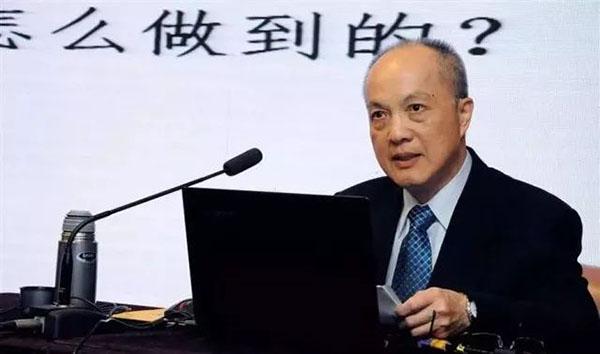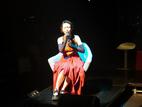"Seeing the archives of Western missionaries’ written works about China is like discovering another Dunhuang treasure," said Mr. Su Jing, a 74-year-old scholar.
In the middle and late 15th century, with the great geographical discovery and the outward expansion of Spain and Portugal, European missionaries went to preach the gospel all over the world. During the Ming Dynasty, Jesuits took the lead in entering China, opening scientific and cultural exchanges between China and the West during the Ming and Qing Dynasties. From 1552 to Matteo Ricci's arrival in China in 1583, there were 32 Jesuits, 24 Franciscans, two Augustinians and one Dominican who tried to settle down in China but failed. It was not until 1583 when Jesuits Michele Ruggieri and Matteo Ricci arrived in Zhaoqing as "Buddhist monks", that the history of Jesuit ministries in inland China began. Since then, Christian churches, one after another, have been sending missionaries into China.
Missionaries in different periods had a great influence on China. Among them, the documents left by missionaries in China are like a Dunhuang discovery to Chinese scholars involving not only political history, military history, but also civilian history, material civilization history, and cultural history. Unfortunately, these documents lie silently in Western libraries and have been ignored by Chinese scholars for a long time.
Su Jing, Ph.D. in the Institute of Library Research, University of London, UK, was a professor at Fu Jen University in Taiwan, and is now retired. At the age of 47, Su was the director of a library's ancient books department. He could have retired after working for another year and 10 months, but he decided to study in Britain. After getting a master's degree, he sold his house because he couldn't find a job and then went to England to study for a doctorate. When searching the archives in the library, Su came into contact with the complete missionary archives that few people studied, especially the rich records of printing and publishing, hospitals, schools and other aspects related to missionary work. These missionary-related records attracted Su Jing deeply, so he began copying materials.
For three years, he soaked in everything the library had to offer on the files of missionaries coming to China, copying 2.5 million words. After returning to China, he continued to copy documents by microfilm, reaching 4.5 million words. Subsequently, Su Jing published Casting for Engraving: Changes in Chinese Printing in the 19th Century (Zhonghua Book Company). Tencent Culture made a comment on this book: "After the book was published in mainland China, it caused a sensation. The rigorous argumentation and solid materials in the book are amazing."
Tencent Culture interviewed Su Jing for this book and invited him to review the beginning and process of the 4.5 million words he had copied. In the interview, he recalled: "When I searched the archives in the library, I didn't see Chinese scholars and I rarely saw British and American scholars. The archives of missionaries coming to China are complete, especially the records of printing and publishing, hospitals, schools, etc., because they are related to missionary work, so people can't resist the temptation of' copying them down'."
It is precisely because of these words that the stories of unknown missionaries are displayed for us and some materials have changed our original understanding of the missionaries. In the interview, Su Jing talked about some historical anecdotes which give people a different perspective, such as the following two:
1. Empress Dowager donated 1,000 grams of white silver to build the Union Medical College.
In November 1901, Scottish missionary Thomas Corkeren, who was appointed by the London Mission Society, arrived in China to set up Peking Union Medical College. After arriving in Beijing, Kekeren opened an outpatient clinic. Among the patients in the outpatient clinic was Li Lianying, who introduced them to the Empress Dowager Cixi. The London Mission Society was acknowledged by the Empress. The construction of the Union Medical College received the first donation from Cixi. After that, the College received a donation of 1600 Pounds from Li Lianying. Finally, Peking Union Medical College was officially completed in 1906, with 14 foreign teachers, and became the only church education institution recognized by the Chinese government at that time. The British Foreign Secretary and American Ambassador attended the inauguration ceremony and delivered speeches.
In 1915, the Rockefeller Foundation acquired Union Medical College. Subsequently, Rockefeller Foundation invested funds to build a new college. In September, 1917, the Rockefeller Foundation of the United States helped to establish Peking Union Medical College and opened medical foundation programmes. The affiliated hospital was Peking Union Medical College Hospital.
On this basis, it is generally believed that if Cixi had not donated the while silver, the Union Medical College could not have been opened. However, according to the archives copied by Su Jing, Cixi's donation only accounts for about 1/5 of the total donation, so it was not the major portion of the total donation.
2. Robert Morrison pioneered modern Chinese movable-type printing.
Movable-type printing is often traced back to Bi Sheng (a Chinese inventor of its kind). However, before the missionaries in China introduced modern printing, movable type printing was never popular. Robert Morrison, an English missionary, was the first Western Protestant missionary sent to Chinese mainland. 200 years ago, he hired a professional printer from England and came to China to print dictionaries with the equipment he brought. This was the first time that modern movable type printing entered China. At the same time, he also published the first English-Chinese dictionary in Chinese history. He was also the first to translate the Bible into Chinese.
To the wide neglect of missionaries’ contributions in China, Su Jing said, "Missionaries were not very appropriate in some political issues. If they had not interfered in politics too deeply and widely, we may not ignore their contributions today."
Su Jing also said that missionaries were not perfect either. "Missionaries in China made constructive contributions to modern Chinese society, but what they did was not all right. They were not perfect themselves, but could also be selfish, jealous, and prejudiced. We can't just see their good side, nor can we just see their bad side."
William Muirhead, for example, was regarded as a perfect person in his contribution of Chinese historical materials, but according to the records of missionaries in China, it was he who personally closed the London Missionary Society Press. That was an important channel to pass on Western learning to China. In the same year, Muirhead also transferred a church hospital to non-governmental organizations. It can be said that the two foundations set up by London Missionary Society in Shanghai were all ruined by him, and the means he adopted were not very glorious. It can be seen that although Muirhead made great contributions, there was also some dereliction in his deeds.
Beginning in the late Qing Dynasty, the total number of missionaries in China is about 15,000. Professor Su Jing said that after reading and copying these vast missionary archives for so many years, he only read a small part of them. By contrast, the documents left by these missionaries were not only amazing in number but also varied in content, involving many aspects such as civil history, material civilization history, and cultural history.
Facing this historical material like the Dunhuang Treasures, he hoped that more scholars would continue to do this work in the future.
Original text from Christian Times.
- Translated by Charlie Li












